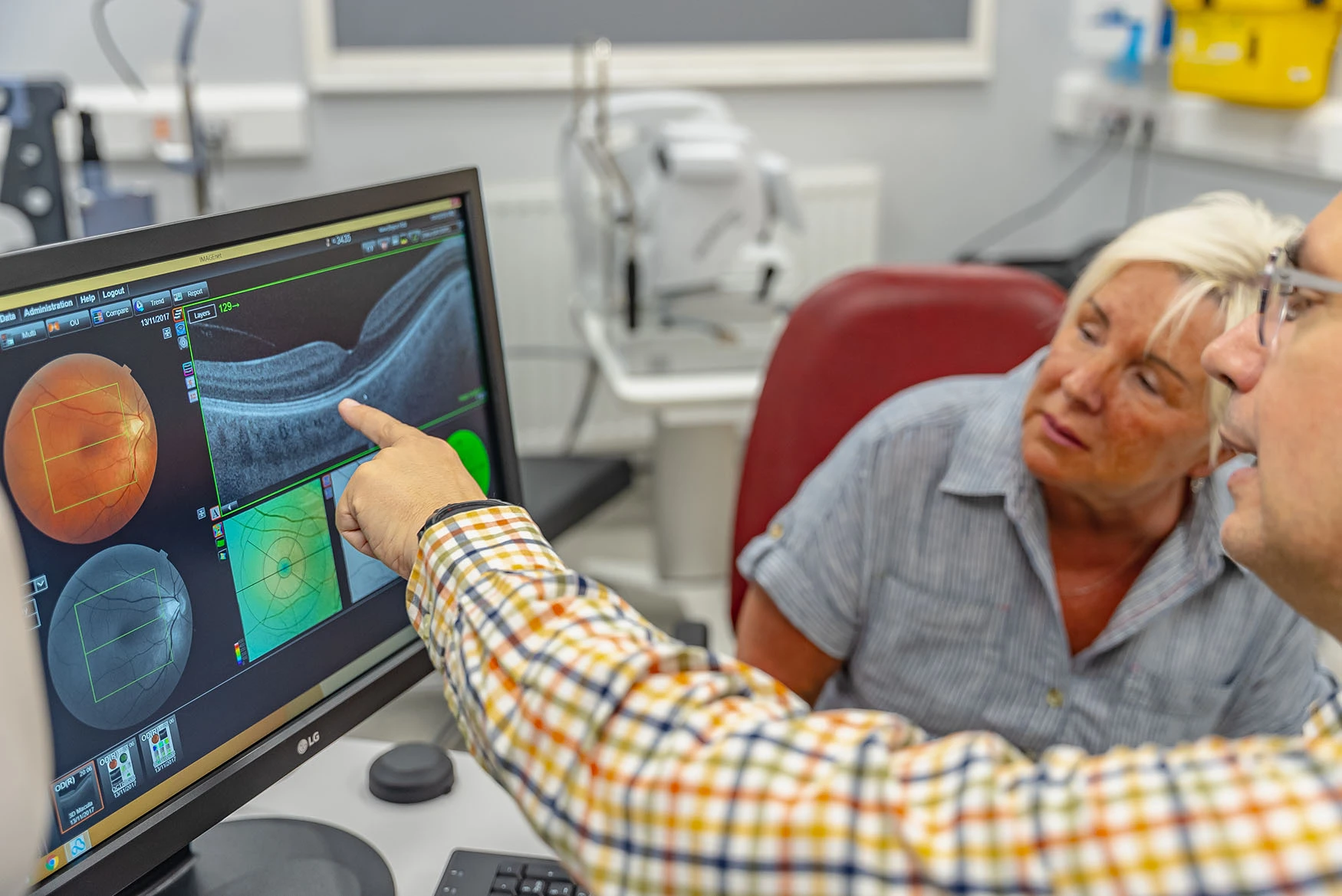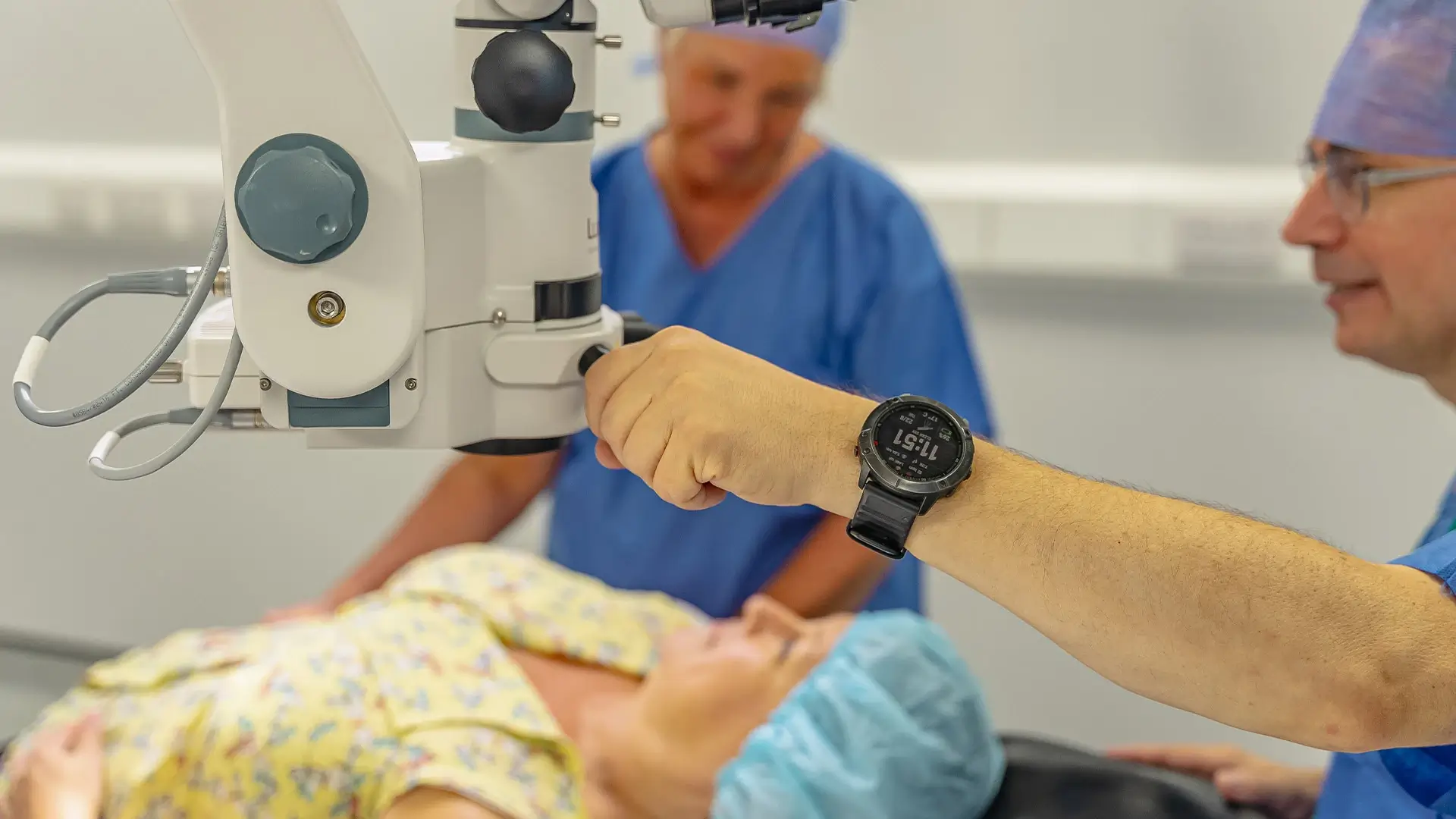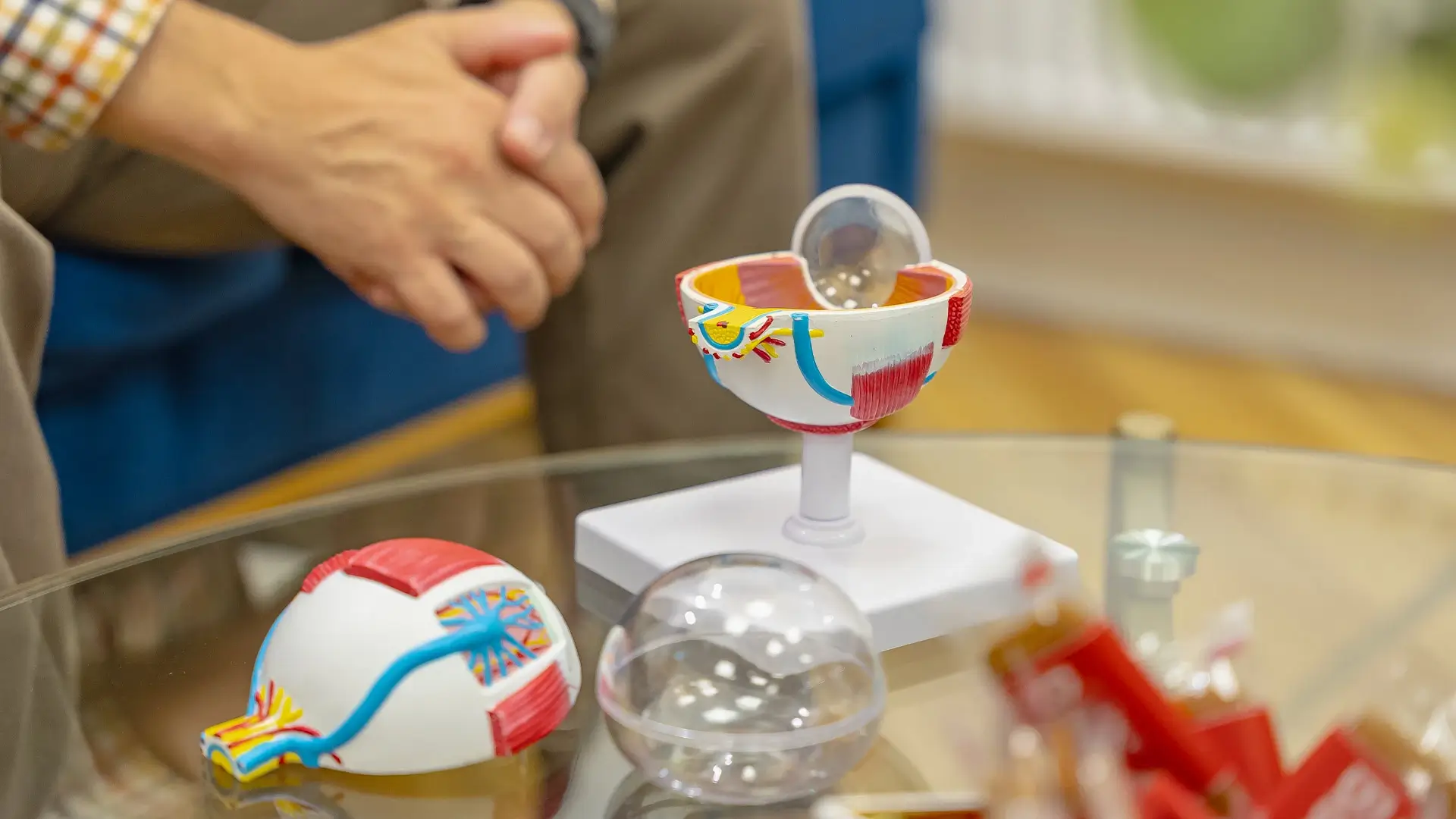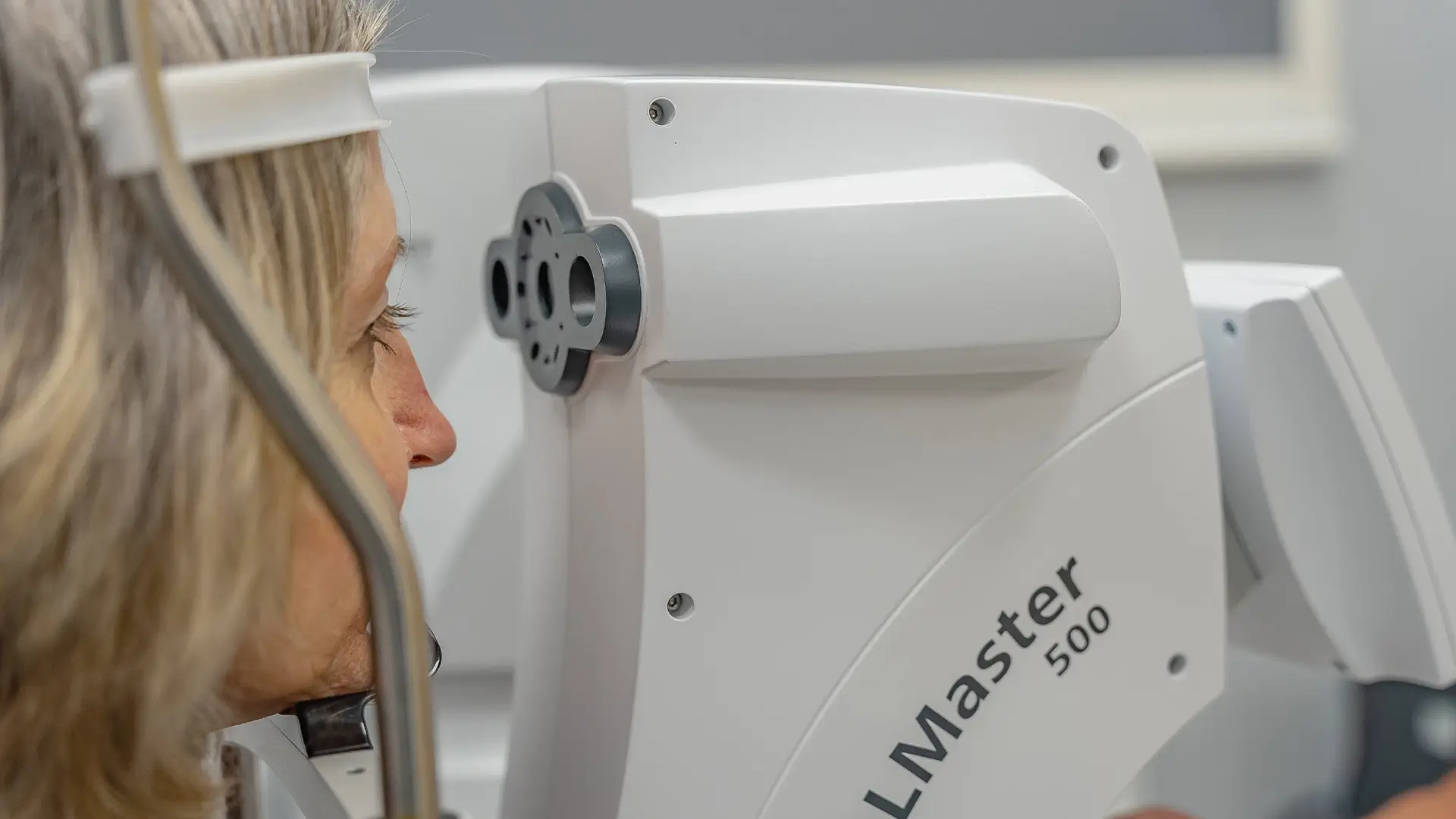Epiretinal membrane may be called macular pucker, cellophane maculopathy, pre-retinal fibrosis, membrane or scar tissue on the retina. This results in distorted and/or blurred vision.
Retinal Problems
Quick Links:
Some patients as they get older experience floaters which are shadows and shapes drifting across their vision.
A macular hole is a small, circular gap which opens at the centre of the retina, causing blurred vision and distortion where straight lines appear wavy.
AMD is the most common cause of severe loss of eyesight among people 50 years and older.









